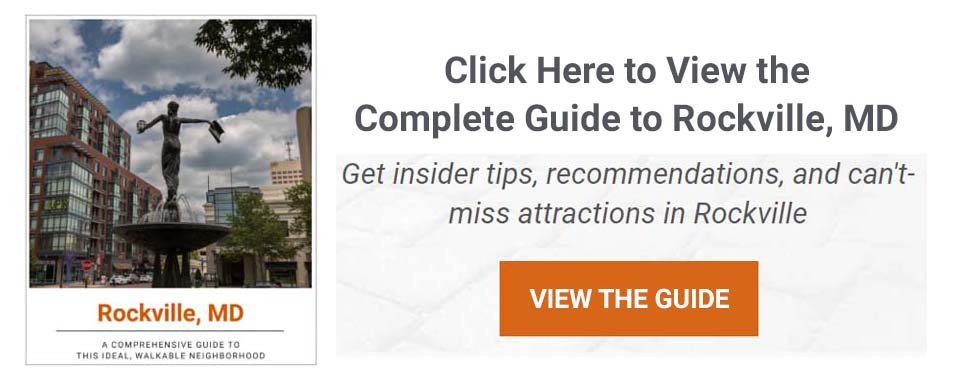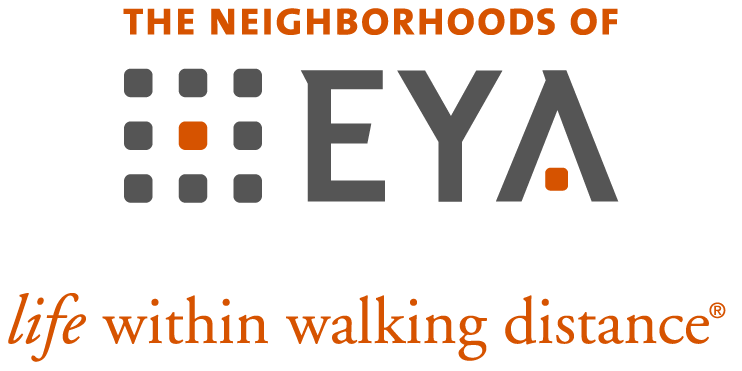Rockville, Maryland: A Renaissance Story
Smart Growth Trends | Montgomery County | Rockville | walkable community | Tower Oaks | Rockville MD
By: Jennifer Sergent on January 2nd, 2020
Tom Maddox has seen Rockville’s landscape change dramatically since he was a boy in the 1940s. “From the center of Rockville, you didn’t have to go three miles without encountering a working farm,” says Maddox, the third generation in a family of surveyors who’ve helped developers transform the city and its surroundings from a rural outpost in the 19th century into the thriving metropolitan suburb it is today. Yet Rockville’s pastoral legacy runs deep, where neighborhoods such as King Farm and North Farm refer to their previous incarnations, and Dawson Farm Park combines public open space with the property’s two original 19th-century farmhouse buildings.
Discover Modern Townhome Living in Rockville, MD
Going Green
The importance of green space isn’t just an ideal— it’s embodied within Rockville’s comprehensive plan: “By policy, there’s a park within 10 minutes’ walking distance of every home” across the city’s 13.6 square miles, says David Levy, the assistant director of planning and development services. Even as new developments such as EYA’s Tower Oaks community continue to arrive, “they must come with open space,” says Rockville Mayor Bridget Donnell Newton, who goes on to list city initiatives like adding more trails and bike lanes to expand options for pedestrians and cyclists. As it stands, the paved, 11-mile Carl Henn Millennium Trail offers a way to circumnavigate the city without a car. Residents considering a move to Tower Oaks, meanwhile, can stroll their own wooded trail around two sides of the development that abut Woodmont Country Club—a world away from civilization, seemingly, though restaurants such as Clyde’s Tower Oaks Lodge and the Stanford Grill are just across the street from the development’s main entrance, which is also on Montgomery County’s Ride On bus line that can take residents to the nearby Twinbrook Metro stop and elsewhere across the city and county.
Top 3 Reason to Live in a Walkable Community
“I absolutely love the quality and number of parks in Rockville. I walk to several of them frequently with my young son every week as the weather allows. They are a great public resource and tax money well spent to enhance the quality of life in this community,” one resident wrote in the city’s biannual community survey, which was published in February, 2019. “The availability and condition of sidewalks is also very important to me. I definitely would not have bought a house here if I couldn't walk to bus stops, the Metro, shopping centers, etc.”
History at the Crossroads
The proximity city residents enjoy to surrounding business, retail, and transportation corridors has always been a defining factor for Rockville, which became Montgomery County’s government seat in 1776 and incorporated as a city in 1801. The area then was at a major crossroads for farmers bringing their goods to market along Rolling Road, which is known these days as Rockville Pike. “That’s why people started settling here. The original settlers were tavern owners serving those farmers,” says Miriam Bunow, the education and outreach manager for Peerless Rockville, a nonprofit dedicated to preserving the city’s heritage. Once the B&O Railroad erected a train station in 1873 (which still stands today), the new line brought DC residents outward to construct exuberant Victorian, Colonial Revival, Georgian and farmhouse structures as their vacation homes in the country. One of those mansions, known as Glenview, survives as a civic center today, with an art gallery, wedding and event space, and 28 acres of landscaped grounds and ornamental gardens that are open to the public.
A City of Neighborhoods
Since country roads became highways, and taverns have evolved into destinations such as Rockville Town Center, Pike & Rose, and the coming Twinbrook Quarter, one thing remains the same, Mayor Donnell Newton says: Rockville’s deep sense of community and neighborly hospitality. “It’s the people here that make this city so great,” she says. “I like to call it a small town in a big city.” Rockville calls itself a city of neighborhoods—and there are 113 of them. These city sections are communities of neighbors who look out for each other, says Hjarman Cordero, Rockville’s senior community engagement coordinator. Each year, in fact, the city council presents Good Neighbor awards to those who’ve been nominated for their good deeds. “They’re our local heroes,” Cordero says. “They remind us of the goodness that is out there around our community.” The four 2019 recipients, for example, includes a woman who works with the local Elks Lodge to hold monthly dances for her developmentally disabled son and nearly 100 others like him; a sheriff’s deputy who helps his neighbors fix things around the house and do lawn chores; another man who cuts grass and shovels snow for his elderly neighbors; and a woman who’s taken charge of preserving her community’s tree canopy.
The city is equally invested in helping each neighborhood better itself, Cordero says. Each year, it awards 10 grants of up to $1,000 for community building, improvement projects and livability initiatives. There’s even a Rockville City Academy, a free six-week program for new residents who want to learn about the city’s history, its government and (of course) its neighborhoods.
Commercial Improvement
Even when it comes to major commercial endeavors, fostering a neighborly quality is always top of mind, says Levy, the assistant planning director. The city is currently in the midst of executing a Rockville Pike Neighborhood Plan, which was adopted in 2016. “It’s not called the Rockville Pike Plan, it’s called the Rockville Pike Neighborhood Plan,” Levy says of the portion that’s within the city limits where increasing numbers of residents are choosing to live. “At issue is, how do we take this nondescript, suburban, auto-oriented shopping area and make it a better place to be? How do we convert it into a good place to live, considering that thousands of people already live there, and thousands more are coming.” The current objectives seek to make the pike more pedestrian friendly, with store and business fronts close to the street and not beyond huge parking lots. “There are no parks or public open spaces for recreating, social gathering, or outdoor enjoyment,” the executive summary states. A model for the plan’s vision is Twinbrook Quarter, a recently approved development project to include sidewalks, bike paths, and open space that surround 11 mixed-use business, retail and residential buildings to be built in phases over the next 30 years.
Take this fun & quick quiz to find
the perfect activities for you in Rockville, MD
Mayor Donnell Newton admits that when she moved to a one-bedroom apartment on Rockville Pike in 1981, the pike and downtown area “were a sea of asphalt parking lots.” The population had stagnated between 1970 and 2000, growing by less than 5,000 residents in 20 years. Five elementary schools closed in the 1980s as a result. But things have changed markedly to attract more people, and it shows: Population growth spiked between 2000 and 2010, from 47,388 in 2000 to 61,209. It’s edging 70,000 residents today. Donnell Newton attributes the change to several factors:
- The advent of the surrounding tech and bio sector along the I-270 corridor;
- The expansion of NIH and the National Navy Medical Center; three Metro stations;
- Abundant parks and city services;
- and initiatives such pedestrian-activated crossings in Rockville Town Center, the passage of a Bikeway Master Plan, and the formation of a Pedestrian Advocacy Safety Committee.
“Young families are choosing Rockville because of the above,” Donnell Newton says—so much so that the county has opened a new elementary school for the first time since those earlier closures, bringing the city’s total to five. The new Bayard Rustin school, named for a prominent 20th-century civil rights and LGBT activist, is a five-minute drive from the 375 townhomes, condos and single-family homes planned at Tower Oaks.
Celebrating Diversity
“I think my neighborhood in Rockville is, overall, a great place to raise kids. We have great schools,” a resident wrote in the 2019 community survey. And as new residents have moved into the city, Levy notes, it’s benefited from their diversity. His daughter’s friends at Richard Montgomery High School have exposed her to myriad cultural traditions, he says, and lists area restaurants and food markets that offer food from Bosnia, Turkey, Arab and Latin nations, among others. Donnell Newton proudly points to the flags of the United Nations that fly outside City Hall to recognize the city’s cultural tapestry. “It’s a much more vibrant place—that’s a real calling card,” says Tim McDonald, who grew up in the house his grandfather built in Rockville. And though he currently resides in Arlington, he regularly goes back for block parties in his old Historic District neighborhood because his ties there have remained so strong.
No Place Like Home
Tom Maddox, who’s resided in the city all but six years of his life, praises its services at North Farm, where he’s lived since 1978. “When we get a snow here, we’re plowed instantly. If we get a pothole, they’re on it. Whenever we have a problem, they’re Johnny-on-the-spot,” he says. “Where I live is unbeatable. I-270 is two minutes away, everything is convenient and easy to get to, and during the holidays, they have bands and shut off the downtown arteries. You can go downtown and dance in the street.”
To discover more about what life could look like in Rockville, check out an Insider's Guide to Living in Rockville, with the best places to go, things to do, and more.




